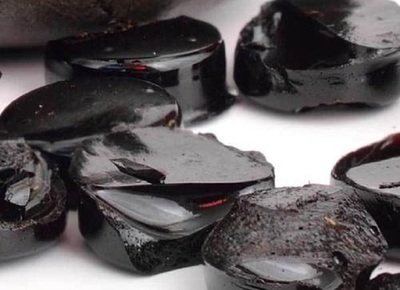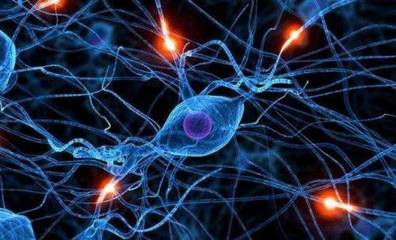The Uses and Benefits of Shilajit
03/12/2025 10:08:59
Shilajit is a black, sticky substance mainly secreted from the rocks of the Himalayas. It is known as "rock juice" in Tibetan culture and is renowned in Ayurvedic medicine for its rich mineral content. This secretion from high-altitude mountainous areas is believed to enhance physical strength, restore vitality, and promote overall health.
I. What is Shilajit?
Shilajit is thought to be formed through the gradual decomposition of plant materials, including white clover, and various molds, facilitated over a long period (possibly spanning several centuries) by a variety of microorganisms. However, the exact origin of Shilajit remains controversial. Some propose geological processes, such as the melting of metallic elements like gold, silver, copper, and iron, while others speculate on a biological origin, including animal feces. Despite these different theories, most literature suggests that decayed plants are the main source of Shilajit.
Shilajit is mainly composed of humic acid, fulvic acid, dibenzo-α-pyrone, proteins, and more than 80 minerals, with a variety of chemical components. Humus, including fulvic acid, is a decomposition product and is the main bioactive compound found in Shilajit, accounting for about 60%-80% of the total composition of Shilajit. Fulvic acid is a small molecule that is easily absorbed in the intestine. It is known for its effective antioxidant and anti-inflammatory effects.

In addition, dibenzo-α-pyrone, also known as DAP or DBP, is an organic compound that also provides antioxidant activity. Other molecules present in Shilajit include fatty acids, triterpenes, sterols, amino acids, and polyphenols, and variations are observed depending on the origin region.
II. Traditional Uses of Shilajit
Throughout history, Shilajit has played a crucial role in traditional medical systems such as Ayurveda and Tibetan medicine. In Ayurvedic medicine, Shilajit is considered an effective natural medicine with multiple benefits. It is called "rasayana," which means "rejuvenation," and it can prevent diseases and improve the quality of life.
Traditionally, it has been used to enhance physical strength. In Sanskrit, "Shilajit" means "the destroyer of weakness and the conqueror of the mountains." It is also renowned for promoting longevity, anti-aging, and preventing diseases through its antioxidant and anti-inflammatory properties, making it a cornerstone of Ayurvedic practice.

Over the centuries, its therapeutic potential has been recognized and utilized. In Nepal and northern India, Shilajit is a staple in the diet, and people often consume it for its health benefits. Common traditional uses include aiding digestion, supporting urinary tract health, treating epilepsy, relieving chronic bronchitis, and combating anemia. In addition, its adaptogenic properties help relieve stress and boost vitality.
Ayurvedic doctors use it to treat diabetes, gallbladder diseases, kidney stones, nervous system disorders, irregular menstruation, and more. The claimed benefits are substantial, reflecting its enduring reputation as a valuable natural resource.
III. Scientific Confirmation of Shilajit's Efficacy
Research across multiple fields is steadily emerging to support the beneficial applications of Shilajit.
IV. Energy and Mitochondrial Function
As we age, the efficiency of our mitochondria (the powerhouses of the cells) in producing energy (ATP) decreases, which may lead to various health problems, accelerate aging, and promote oxidative stress. This decline is often associated with the deficiency of certain natural compounds, such as coenzyme Q10 (CoQ10) (a powerful antioxidant) and dibenzo-α-pyrone (DBP) (a metabolite of gut bacteria). Combining Shilajit (which contains DBP) with CoQ10 is believed to enhance the cell's energy production and protect it from damage caused by harmful molecules. This combination has shown promise in improving cellular energy production and may support overall health and vitality as we age.

In a 2019 study, the effects of Shilajit supplementation on muscle strength and fatigue were investigated. Active men took 250 mg, 500 mg of Shilajit, or a placebo daily for 8 weeks. The results showed that participants who took the higher dose of Shilajit exhibited better muscle strength retention after fatiguing exercise compared to those who took the lower dose or the placebo. However, larger-scale human studies are needed to validate these findings.
V. Cognitive Function
Research on the effects of Shilajit on cognitive functions such as memory and attention is expanding. Alzheimer's disease (AD) is a debilitating disease with no known cure currently. Scientists are turning to Shilajit extracted from the Andes because of its potential to protect the brain. In a recent study, researchers investigated how Shilajit affects brain cells in laboratory cultures. They found that certain extracts of Shilajit can promote the growth of brain cells and reduce the aggregation and tangling of harmful tau proteins, which is a key feature of AD.

Another study focused on fulvic acid, the main active compound in Shilajit. The research showed that fulvic acid can prevent the formation of abnormal tau proteins in laboratory cultures and break them down after they are formed. These findings suggest that fulvic acid has the potential to treat AD. Although these results indicate that Shilajit has the potential to protect and repair the brain, further research on living human subjects is still needed.
VI. Heart Health
Shilajit is known for its antioxidant properties and is also considered to have potential benefits for cardiovascular health. In a study involving healthy volunteers, taking 2 grams of Shilajit daily for 45 days had no significant effect on blood pressure or pulse rate compared to the placebo. However, significant decreases in serum triglyceride and cholesterol levels were observed, along with an improvement in the level of high-density lipoprotein ("good") cholesterol. In addition, Shilajit also improved the antioxidant status of the participants, increasing the levels of key antioxidant enzymes such as superoxide dismutase (SOD) in the blood, as well as the levels of vitamins E and C. These findings indicate that the fulvic acid content in Shilajit has powerful antioxidant activity, as well as potential lipid-lowering and cardioprotective effects.

A 2022 study involving postmenopausal women (a group at higher risk of heart disease) showed that Shilajit supplementation reduced oxidative stress markers and increased glutathione (an effective antioxidant molecule). Further research is needed to fully elucidate the mechanism of action of Shilajit as a potential therapy for heart health.
VII. Male Fertility
Emerging research suggests that Shilajit may have potential benefits for male fertility. In a 2015 clinical study, researchers evaluated the effects of Shilajit on male sex hormones in healthy men aged 45-55. Participants took 250 mg of Shilajit or a placebo twice a day for 90 days. The results showed that compared to the placebo, the levels of total testosterone, free testosterone, and dehydroepiandrosterone (DHEA) increased significantly. Shilajit exhibited better testosterone synthesis and secretion properties compared to the placebo, which may be due to its active ingredient dibenzo-α-pyrone (DBP). Other studies have found that Shilajit can improve sperm production and motility in men with low sperm counts.

VIII. Immune Support
Shilajit has also been found to have positive effects on the immune system and inflammation. The complement system is an important part of the immune system, helping to fight infections and eliminate harmful substances in the body. However, if this system becomes too active, it can lead to tissue damage. Some treatments aim to control this process, and restoring the complement system has been proposed as a strategy for treating inflammatory diseases. Research shows that Shilajit interacts with the complement system, enhancing innate immunity and regulating the inflammatory response, thus producing an immune-boosting effect.
Shilajit also has anti-inflammatory effects and has been shown to reduce the level of the inflammatory marker high-sensitivity C-reactive protein (hs-CRP) in postmenopausal women with osteoporosis.

IX. How to Use Shilajit
When using Shilajit, it is very important to prioritize safety and choose high-quality products.
First of all, before implementing a new supplement regimen, be sure to consult your trusted healthcare professional, especially if you already have a health condition or are taking medications.
Shilajit is available in various forms, including powder, capsules, and purified resin. The dosage ranges from 200 to 2,000 mg per day. Most commonly, 500 mg is taken per day (divided into two doses). Starting with a low dose and gradually increasing it over time may be a prudent choice to assess how your body feels.
Since the exact chemical composition of Shilajit may vary depending on the geographical region, its effects on the body may also differ. It is best to use standardized products that indicate the content of active ingredients (including fulvic acid and DBP). For example, PrimaVie is a purified and standardized Shilajit extract used for nutritional and health purposes.
Third-party testing from verified and accredited laboratories and analysis certificates can help consumers verify the quality. Be sure to check the label to ensure that the product does not contain any allergens or unnecessary additives.
By following these guidelines and using Shilajit responsibly, you can safely incorporate it into your health routine to obtain its potential benefits.
The information provided does not substitute professional medical advice. Before taking any dietary supplements or changing your diet or exercise habits, be sure to consult your doctor or other qualified healthcare providers.




